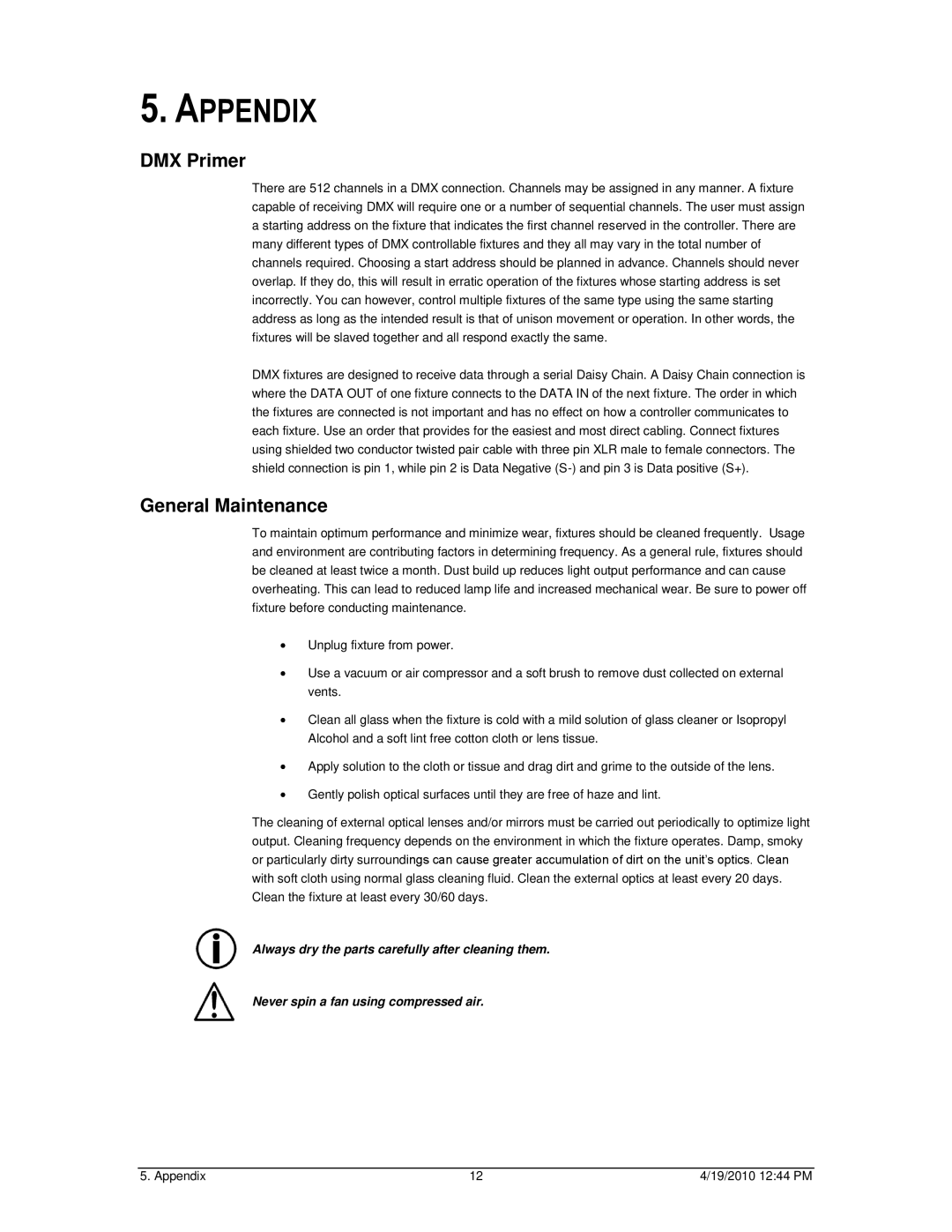64C specifications
The Chauvet 64C is a powerful and versatile LED wash fixture that has made significant waves in the lighting industry. Designed with a range of applications in mind, from concerts and theater productions to corporate events and architectural installations, this fixture offers a unique combination of features and technologies that set it apart from the competition.One of the standout characteristics of the Chauvet 64C is its high-quality RGB color mixing system. This system allows for a vibrant spectrum of colors, enabling users to generate everything from subtle pastel shades to bold, saturated hues. The fixture is equipped with 64 RGB LEDs, which ensures that the output is both bright and rich in color depth. This capability is further enhanced by its advanced optics, which provide an even wash distribution, reducing the likelihood of hot spots and ensuring a smooth transition of colors.
Another key feature of the Chauvet 64C is its user-friendly control options. The fixture offers multiple control modes, including DMX, master/slave, and standalone modes. This versatility allows for seamless integration into various lighting setups, whether in a large-scale production or a smaller venue. Additionally, the Chauvet 64C supports various DMX channel modes, giving lighting designers flexibility in how they operate and program the fixture.
The Chauvet 64C also boasts innovative technologies such as electronic dimming and strobe effects. The electronic dimming allows for smooth fades and transitions, essential for creating mood and atmosphere in any setting. The built-in strobe effect is perfect for creating dynamic visuals during high-energy performances or events, adding an extra layer of excitement to the lighting display.
Durability and mobility are other important characteristics of the Chauvet 64C. With its sturdy construction and compact design, this fixture is built to withstand the rigors of touring and frequent setup and breakdown. The unit's lightweight design also makes it easy to transport, making it a favorite among event technicians and rental companies.
In conclusion, the Chauvet 64C is an exceptional LED wash fixture that combines vibrant color mixing, versatile control options, and robust performance features. Its innovative technologies and durable design make it suitable for a wide range of applications, making it a reliable choice for lighting professionals seeking to create compelling visual experiences. Whether enhancing a concert, loading in for a theater production, or adding ambiance to an event, the Chauvet 64C delivers quality and versatility that stands out in the competitive lighting market.

